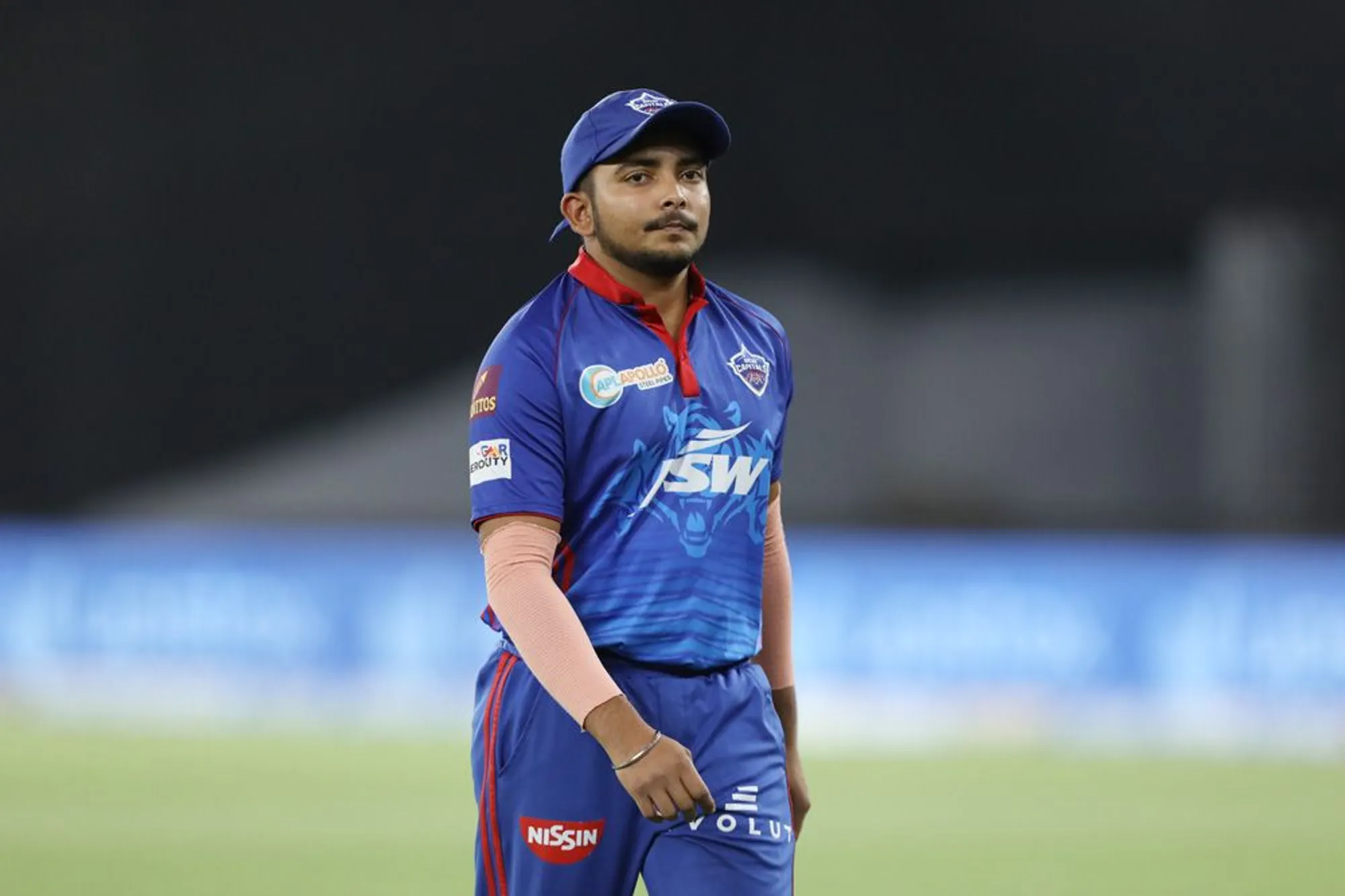Prithvi Shaw should be the new meta for India’s outdated T20I powerplay games
A new ‘Meta’ only comes to play, when the existing ones are found out or become stale, in the gaming world. In cricketing terms, Prithvi Shaw can very well be India’s new meta in the powerplay, a phase that they have struggled over the past year or two, in comparison to the other countries.

Over the past two years, since the 2019 home tour against West Indies, India have maintained one of the best win ratios in international cricket, winning 14 out of the 18 possible T20I encounters against the top nations in the shortest format. Away from home, India have won back-to-back series in Australia and New Zealand, with score lines of 2-1 and 5-0 before completing the memorable comeback against the best T20I nation in the world, England 3-2.
Yet, somewhere in between all of this, there is a weakness, well known in the Indian outfit, their ability to convert the powerplay into a match-winning one. Over the past two years, since the turn of 2019, India have scored 1437 runs, second best to only New Zealand in world cricket, at an average of 46.35, second-best to Australia.
But in between these lines, India’s strike rate ranks as the fifth-best amongst the top-six teams in T20Is, at just 128.76, with Pakistan standing last, with a strike rate of 115.37. A major cause of this, India’s rather slow and timid approach in the powerplay, a phase that has continually hurt them, even though they are winning games. It hurt them in Australia, it continued to hurt them in India, against England before Virat Kohli finally decided to end the approach.
We want to be a side that plays free cricket, not have any baggage of lack of depth and one guy having to bat long enough to make sure we get to a big total
Virat Kohli said before the start of the T20I series against England
He wanted India to be more aggressive, more responsive and to be more proactive during the powerplay, which was also one of the reasons for opening with Ishan Kishan. While the experiment worked well, India since then has moved on to the opening pair of Rohit Sharma and Virat Kohli, a move that worked out well in the final T20I but?
Throughout the series, India packed a late punch, be it with the bat or the ball, moreso with the bat. Their approach has been highly criticised, with only 186 runs in the powerplay phase, averaging 23.25 while striking it at 103.3. Integral to India’s problem in the series were, Rohit Sharma, Shikhar Dhawan and KL Rahul, all of whom had slow strike rates.
What’s the real scene
And, the major competition to judge them before the World T20 - was the IPL - where they are all pitted against each other. The jury, thus far, have angrily pointed out the approach taken by the front-runners. Out of the existing list of openers - Dhawan, Rahul, Rohit and Kohli - only one has a strike rate of above 120, which is Rohit.
Thus far in the competition, the Mumbai Indians skipper has scored 122 runs in the powerplay, while having faced 101 deliveries, averaging 61 at a strike rate of 120.79, which in comparison to the others, look god-like. Kohli averages 27, strikes at 126.56 with just 84 runs while Rahul averages 30, striking at 98.9. Dhawan, the wealthier of the three, has averaged 56 at a strike rate of 112.
That there is a serious problem, for India. No doubt, the conditions thus far in the tournament have been varied. Kohli, Dhawan, Rohit and Rahul have had to play in Chennai, Mumbai, Delhi and Ahmedabad. But so has Prithvi Shaw!
But is the Shaw-stopper enough for India?
In this year’s competition, Shaw has scored a whopping 184 runs, off just 98 deliveries, averaging at 61.33, just behind leaders Faf du Plessis and Jonny Bairstow but striking it at 187.76, the best in the league. That’s where everything falls in place, India’s timid approach with the bat, coincided with how their selection strategies have functioned.
The players, who India have earmarked for the World T20 are all failing to do the exact thing that they are required to do - strike the ball - clean and clear in the powerplay. Shaw has scored the most boundaries in the league during the first six overs and is only behind Bairstow and Rohit - in terms of scoring most sixes - in the competition. In fact, it was in Australia, where the Mumbaikar Shaw had his biggest test, where his foot movements were tangled.
But since that incident, in December, the Mumbaikar has turned a different page with his batting for the Delhi Capitals. With Dhawan-Shaw at the top of the order, Delhi have the best record in the powerplay in IPL 2021, with 350 powerplay runs, at a combined strike rate of 138.89 and averaging 50 for the first wicket, with just seven dismissals in the tournament thus far.
Now, Shaw isn’t a god, he isn’t a solution to every Indian problem but for this one, he’s the prime solution, at the right time as well. But his weakness, the ones that have existed thus far in the tournament has been left-arm pacers and off-spinners. Against left-arm pace, he has only averaged 17.5 while striking it at 116.7. However, against off-spinners, he averages 24, striking at 240, which shows that the dismissal was rather timid. But against all other bowlers, including right-arm fast, Shaw strikes it at 160 and above, with just 30% dot-ball percentage.
The Shaw must go on
The Mumbai opener had a tough run last year and since his IPL debut, has had his fair share of criticism but at what cost? Since April 23, 2018, when he made his debut in the competition, Shaw ranks as the fourth-best opener in the tournament. In the last three years, at the top of the order for Delhi, Shaw has scored 743 powerplay runs, at an underwhelming average of 24.77 but at a strike rate of 144, even ahead of the likes of Suryakumar Yadav.
This is where things get interesting, pair India’s struggle in the powerplay and how their middle-order has performed. The middle-order during the same time period, from 2019 that is, has averaged 24.61 while striking it at 124.06, which has put the entire focus on the death overs and the finishers to do the job.
India, in the death overs, have one of the best strike rates, in fact, the best amongst the top six teams, at 167.88 while still averaging 31.45. So the problem isn’t in the death but rather the death of their batting in the powerplay. Shaw not only solves those problems but also rearranges a unique pattern of play, which would allow the middle-order to flourish, given the good start from the openers. And the IPL 2021 just solved one of India's long-standing problems, with the ball now in India's court, whether they can make full use of it, or not, stands up to them!
Forget all of that, if the tournament is happening in India, it would be in conditions where Shaw, now has made a living!

Comments
Sign up or log in to your account to leave comments and reactions
0 Comments